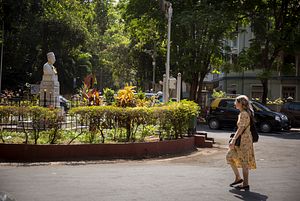The Parsi community, as descendants of the Zoroastrians (from Iran), are called in India, are a strange coming together of the overly publicized and the fiercely guarded. There are illustrious names and unchallenged legacies, such as that of the industrialist family of the Tatas, a name that Mumbai cannot do without. A cancer hospital, a performing arts center, an institute for social sciences, a hotel by the sea – many such landmarks have a Parsi surname attached.
Yet there are also gated colonies that non-Parsis cannot enter, places of worship that are not for all, teachings that must pass down only from one Parsi to another, and a bloodline that “must be preserved.” The Parsis, celebrated for their wealth and philanthropy, are equally known for their exclusive ways and lifestyles.
A group of three — a writer, a film curator and a journalist — wanted more than a stand-apart, from-a-distance view of the Parsi life. We wanted to get up close and enjoy the diversity of this small community, which constitutes 0.006 percent of India’s population. So we let the lens lead the way one morning as we walked around the Dadar Parsi colony, an enclave that’s home to the world’s largest concentration of Parsis with only about 8,000 people of the community staying here.
Follow our journey below.
Photos by Joyce William, Abhra Das and Vishal Arora from the Mumbai Photo Expedition.











































